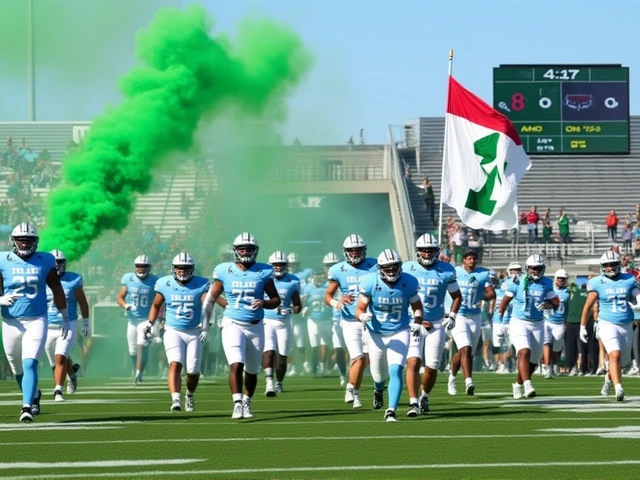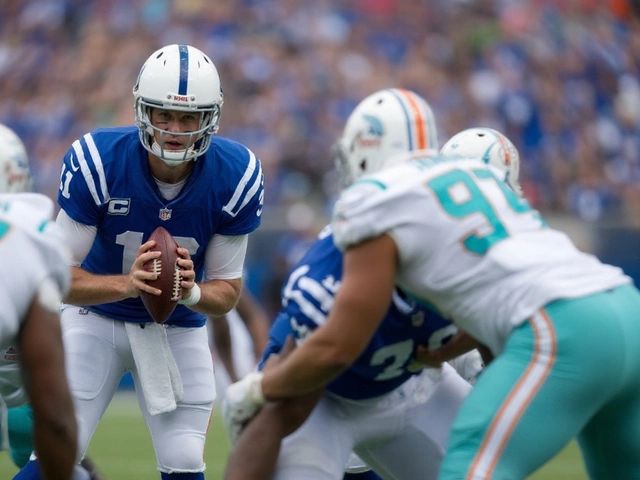Good Days and Bad Days: What Every BMX Fan Should Know
Ever had a ride that felt unstoppable, then one that left you flat on the pavement? Those moments define sports, and they’re the heart of this tag. We’ll break down why the good days feel magical, how the rough ones teach us, and what you can steal from each to level up your BMX game.
Why Good Days Matter
A good day isn’t just a win; it’s a confidence boost that fuels future tricks. Take Oscar De La Hoya’s "Latino Night" in Riyadh. The event blended boxing with live music, creating an electric atmosphere that lifted everyone’s spirit. When you feel that surge, you’re more likely to try a new grind or nail a big jump.
Even in the NFL, Daniel Jones’ debut with the Colts turned into a masterclass. He threw for 272 yards with three touchdowns and no turnovers. That kind of clean start shows how preparation meets opportunity. For BMX riders, a solid practice session—where every pump is smooth—does the same thing: it rewires your brain to trust your bike.
Good days also give you material to share. Fans love success stories; they spread the buzz and attract new riders to the scene. When your Instagram lights up with a flawless line, you’re not just celebrating; you’re marketing yourself.
Turning Bad Days Around
Bad days happen to everyone. Maybe you crash on a split-second decision or your bike stalls on the final lap. The key is not to let the setback define you. Look at the debate about fixing winners in boxing, cycling, and football. Those sports acknowledge unpredictability, and that uncertainty is what makes them exciting.
Neil Smith’s Hall of Fame snub is another reminder that stats don’t tell the whole story. Even without that honor, his six Pro Bowls and two Super Bowl rings speak volumes. For a BMX rider, a missed trick isn’t a career flaw; it’s data for the next attempt.
When you feel stuck, break the session into tiny goals. Instead of trying a full 360, practice the air and landing separately. The same approach works for live broadcast crews—30+ people coordinate to keep the show rolling. Small wins keep morale high and prevent the whole day from sinking.
And don’t forget community. Pick‑up soccer in LA thrives because players show up, share tips, and keep the game moving even when the weather drops. Join a local BMX jam or a rider group online. The camaraderie turns a bad day into a learning session.
Finally, track your progress. Write down what worked, what flopped, and how you felt. Over weeks, patterns emerge, and you’ll see that today’s failure was tomorrow’s breakthrough.
Good days light the path; bad days sharpen the tools. By savoring the wins and dissecting the losses, you’ll ride stronger, think clearer, and enjoy the sport more. Keep hitting the park, keep sharing the stories, and let each day—whether you’re landing clean or wiping out—push you forward.

How to scientifically explain good days and bad days in sports?
- Date: 23 Jul 2023
- Categories:
- Author: Declan Rutherford
In my latest blog post, I delve into the scientific explanation behind having good and bad days in sports. I explore how factors like physical health, mental state, and external conditions can significantly impact an athlete's performance. Our bodies and minds are intricate systems that don't always function at 100%, which can explain fluctuations in performance. Additionally, elements such as weather, equipment, or even an opponent's strategy can influence the outcome of a game. Understanding these aspects can help athletes better prepare and possibly turn a potentially bad day into a good one.




